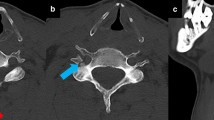Abstract
Whereas the creativity and intellectual power of the radiologist are measured against his/her written report, the value of the message will not only be judged by the precision of the medical statement. The same result can be attributed to different words. Numerous common and accidental factors exert influence on the decision on what is said and what is not said, how it is assessed and what is ignored. The less certain a diagnosis is and the less favourable its possible consequences are, the more subtleties and periphrases are to be expected within the report. The decision on the nature and the volume of the written report will not only be taken by the time of recording, but is likewise prepared by the knowledge of the patient’s history and symptoms, the personal relationship to him/her as well as by a set of conditions throughout the inspection of the images. The intuition that accompanies the information transfer in imaging diagnostics does not only explain the differences in volume and depth of diagnosis and differential diagnosis, but also the range of diagnostic and therapeutic recommendations.
Similar content being viewed by others
References
Larson DB, Duncan JR, Nagy PG, Kruskal JB: Guide to effective quality improvement reporting in radiology. Radiology 271(2):561–573, 2014
Aideyan UO, Berbaum K, Smith WI: Influence of prior radiologic information on the interpretation of radiologic examinations. Acad Radiol. 2(3):205–208, 1995
Elmore GJ, Wells CK, Howard DH, Feinstein AR: The impact of clinical history on mammographic interpretations. J Am Med Assoc. 227(1):49–52, 1997
Leclère J, Leclère C, Ollivier L: Le compte-rendu radiologique: à fond la forme. J Radiol. 88(2):297–303, 2007
Mortani Barbosa, Jr EJ, Lynch MC, Langlotz CP, Gefter WB: Optimization of radiology reports for intensive care unit portable chest radiographs: perceptions and preferences of radiologists and ICU practitioners. J Thorac Imaging 31(1):43–48, 2016 Jan. doi: 10.1097/RTI.0000000000000165
Naik SS, Hanbridge A: Wilson SR radiology reports: examining radiologist and clinician preferences regarding style and content. Amer J Roentgenol 176(3):591–598, 2001
Hegedüs V: Which way? Europ J Radiol 9:1–2, 1989
Göthlin JH: Teaching medical students diagnostic radiology. Europ J Radiol 9:3, 1989
Author information
Authors and Affiliations
Corresponding author
Additional information
Key Points
• The clinician has a flair for different ways of expressing.
• Numerous readers take note of even subtle distinctions of the choice of words.
• The reaction of the recipient is influenced by the terminology.
• Radiologists translate their observations in a personal manner.
• The diagnostic message is more than a declaratory decree.
Rights and permissions
About this article
Cite this article
Golder, W.A. Interpretation and Diplomacy Aspects of Authority and Care in Imaging Reports. J Digit Imaging 31, 5–8 (2018). https://doi.org/10.1007/s10278-017-0014-2
Published:
Issue Date:
DOI: https://doi.org/10.1007/s10278-017-0014-2




